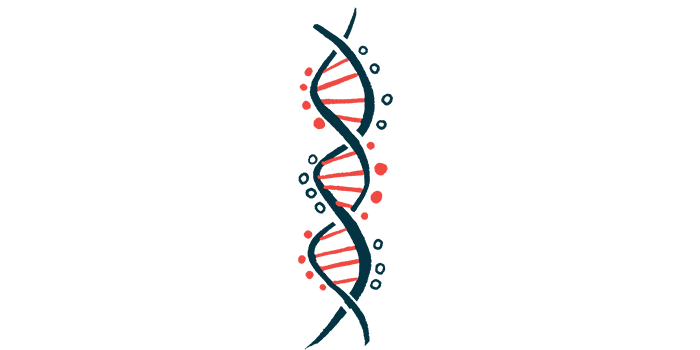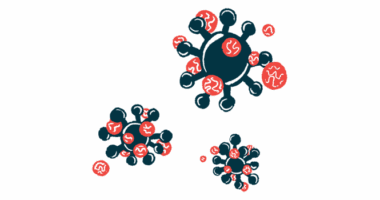New TJP2 mutations detected in girl with mild PFIC4
Case shows genetic testing is important, researchers say

A combination of two new mutations in the TJP2 gene was identified as the cause of a mild form of progressive familial intrahepatic cholestasis type 4 (PFIC4) in a 12-year-old girl, scientists in India reported.
The girl responded well to standard treatment with ursodeoxycholic acid (UDCA), showing a normalization of blood markers of liver damage and a gradual reduction in symptoms, which were completely resolved after six months.
“This case highlights the importance of genetic testing for diagnosing cholestatic liver diseases, especially when conventional tests do not provide a clear diagnosis,” the researchers wrote.
The case study, “A Novel Compound Heterozygous Mutation in Progressive Familial Intrahepatic Cholestasis (PFIC) 4: A Rare Case Report With Literature Review,” was published in Cureus.
PFIC is a group of rare genetic liver conditions marked by cholestasis, or slowed flow of the digestive fluid bile from the liver to the intestines, due to problems in the production and/or secretion of bile from liver cells.
PFIC4 mutations
Cholestasis can lead to the toxic accumulation of bile in the liver, damaging the organ, which over time may result in liver failure and a need for a liver transplant. Common symptoms, usually starting in infancy, include itching, dark urine, pale stools, and jaundice (yellowing of the skin and whites of the eyes).
PFIC4 is caused by mutations in both copies of the TJP2 gene, which provides instructions to produce a protein of the same name that is needed to maintain cell-to-cell connections, such as those between cells forming bile canaliculi, the thin tubes that collect bile from liver cells.
This type is typically marked by elevated blood levels of bile acids and bilirubin — both markers of liver damage — but normal levels of a liver enzyme called gamma-glutamyl transferase, or GGT.
“The condition presents in various ways, including mild non-jaundiced illness, recurring jaundice, and severe progressive liver disease,” the researchers wrote, adding that TJP2 mutations resulting in higher residual TJP2 activity are associated with milder forms of the disease.
“Complete loss of [TJP2] function is expected in those with a complete halt of protein [production] secondary to homozygous mutation,” the researchers wrote.
Homozygous mutation refers to the presence of the same mutation in both copies of a gene. When a person inherits two distinct mutations, one in each copy of the gene, it is called compound heterozygous.
The girl described in the case study had a mild form of PFIC4 caused by a previously unknown compound heterozygous mutation in the TJP2 gene. For three months, she had been experiencing itching that gradually involved the whole body, along with dark urine, jaundice, and pale stools for two months. Physical examination confirmed jaundice, and she had mild liver enlargement. Her weight was normal for her age.
Blood work revealed high levels of liver damage markers, including bilirubin, aspartate aminotransferase, and alkaline phosphatase, but normal GGT levels.
A liver biopsy, consisting of the collection of a piece of liver tissue for analysis, showed signs of cholestasis with structural changes in the tubes that transport bile within the organ, but no evidence of liver scarring.
After ruling out viral, autoimmune, and drug-induced liver injury, the researchers performed comprehensive genetic testing, which detected two new TJP2 mutations, one in each copy of the gene.
One variant, called c.847C>T, was a missense mutation located in the protein-coding region (exon) 5, while the other, c.310G>T, was a nonsense mutation located at exon 4.
Missense mutations result in a change in one amino acid, or protein building block, in the protein’s sequence, and nonsense mutations result in a shorter, likely nonworking, version of the protein.
“These findings were consistent with a diagnosis of PFIC-4,” the researchers wrote.
Treatment eases symptoms
The girl started nutritional support and standard treatment twice daily with UDCA, a nontoxic bile acid that helps bile flow through the liver, which led to a gradual easing of symptoms over six weeks. A six-month follow-up found that the girl no longer had symptoms, and her liver damage markers had normalized.
She was advised to continue UDCA treatment, and the family was counseled about the genetic nature of the disease and the need to keep the girl under surveillance due to PFIC4-associated risk of liver cancer.
“Our case had no evidence of growth retardation … or evidence of chronic liver disease …; paradoxically, her jaundice resolved and [liver damage markers] normalized, which can be explained by her heterozygous mutation of the TJP2 gene,” the team wrote.]
The researchers reviewed PFIC4 cases in the literature, concluding that mutations in exons 4 and 5 are typically associated with chronic cholestatic liver disease, but no liver failure or need for a transplant.
“When adolescents present with unexplained cholestasis, PFIC 4 should be kept on the list of differential diagnoses,” the team wrote. “Early identification, symptomatic management, nutritional support, and regular liver cancer screening are advised.”








